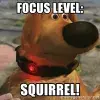I understand why we can’t see stars during the day: the sun illuminates the atmosphere and effectively blots them out. But why can’t we see low earth orbit satellites, which are not exactly “outside” the atmosphere? If they’re inside, shouldn’t we see them reflecting sunlight back to us?
It’s not a matter of in front or behind. It’s just brightness.
Presumably, it’s possible to see them or the stars anyway, just by subtracting out the blue glow of the air, but normal human eyes can’t do that.
The atmosphere is a lot thicker near the ground, but really the sky is just very bright during the day.
You can see some of them that way, particularly the ISS and Iridium satellites. Both require that you, the satellite and the sun be in the right position for you to see a reflection (or “flare”).
It’s worth noting that some satellites are smaller than a loaf of bread and low-earth orbit is 800-2000 km. By comparison, the horizon can be under 5 km. And there’s also the atmospheric conditions between you and it to consider.
If you want to watch a satellite flyover, there are sites and apps that provide the times for your location.
The first time I saw the ISS go over, it reminded me of those silent, fast action scenes in The Expanse. 😄
Because the sky is brighter than they are.
And there small as fuck.
Relatively speaking
You can actually see ISS during the day, but that thing is so small in your perspective you have to use a telescope to actually see it zoom by, and even then it’s just a small dot. Satellite is way smaller than ISS its practically invisible.
Here’s a photo of the ISS with the sun in the background for scale: https://petapixel.com/2025/06/20/once-in-a-lifetime-photo-of-iss-crossing-the-sun-as-solar-flare-erupts/
Ohh i watched Destin’s video about it and they got the footage themselves using a telescope.
Satellites are fairly small and really far away.
Enhance
If you have a proper telescope, satellites can get in the way and run your pictures.
“SPAAAAAAAAACE!”
“wait wtf was that that one orb from portal?”
I recall seeing one of these hyper-zoom videos on yt where they zoomed into the blue sky and at one point it turned black and stars appeared. I imagine the same holds true for LEO sats… you just need to get past that isoluminescnce barrier?
videos on yt where they zoomed into the blue sky and at one point it turned black and stars appeared
This doesn’t sound realistic to me. Could you share a link to the video?
This was years ago, so I doubt I could find it now. Nonetheless, it looked something like this (zooming in and blue sky turns black): https://www.youtube.com/shorts/dJ28M29k4MY
I think you fell victim to some video editing tricks. I am quite sure that you can’t zoom past the blue part or something like that.
Unless, of course, zooming in would mean actually moving upwards through the atmosphere.
That is certainly a possibility. As I recall, the video was not focused on “zoom to the stars” but something else (I’m thinking it was “you can actually see the moon moving through the sky”), so I’m more inclined to believe that I am either mis-remembering the “stars” part of the video, or that what I saw in the video was not stars (maybe Venus, Jupiter, or satellites) as it was certainly not a vast high-contrast star-field…
It comes down to the sun being really bright, enough so to overpower the light reflected from the satellites. Consider for example how you can see the effect of car headlights for kilometres away at night time but during daytime you’d be hard pressed to pick them out at all at such distances. Your eyes at night time also adjust to the low light and can see fainter light sources than you can with eyes adjusted to daytime levels.






